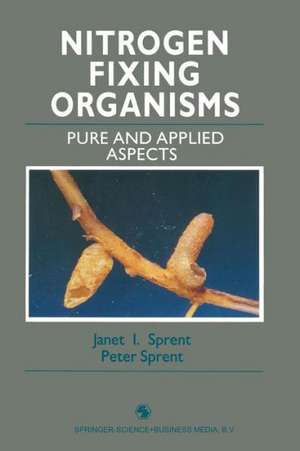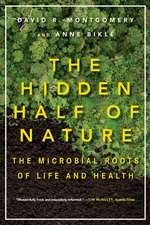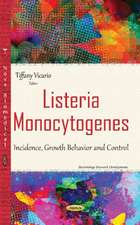Nitrogen Fixing Organisms: Pure and Applied Aspects
Editat de Janet I. Sprenten Limba Engleză Paperback – 14 iun 1990
Preț: 386.61 lei
Nou
Puncte Express: 580
Preț estimativ în valută:
73.99€ • 76.43$ • 61.58£
73.99€ • 76.43$ • 61.58£
Carte tipărită la comandă
Livrare economică 25 martie-08 aprilie
Preluare comenzi: 021 569.72.76
Specificații
ISBN-13: 9780412346903
ISBN-10: 0412346907
Pagini: 256
Ilustrații: VIII, 256 p. 28 illus.
Dimensiuni: 155 x 235 x 14 mm
Greutate: 0.38 kg
Editura: SPRINGER NETHERLANDS
Colecția Springer
Locul publicării:Dordrecht, Netherlands
ISBN-10: 0412346907
Pagini: 256
Ilustrații: VIII, 256 p. 28 illus.
Dimensiuni: 155 x 235 x 14 mm
Greutate: 0.38 kg
Editura: SPRINGER NETHERLANDS
Colecția Springer
Locul publicării:Dordrecht, Netherlands
Public țintă
ResearchCuprins
1 Organisms that fix nitrogen.- 1.1 Introduction.- 1.2 The range of nitrogen-fixing organisms.- 1.3 Cyanobacterial symbioses.- 2 Legume and non-legume nodules.- 2.1 Introduction.- 2.2 Legume-rhizobial symbioses.- 2.3 The ‘classical’ picture of nodule development.- 2.4 Stages of nodulation.- 2.5 Stems and nodules.- 2.6 Non-legumes (actinorhizal plants).- 2.7 Comparisons between legume and non-legume nodules.- 3 Metabolism of nitrogen fixation.- 3.1 The basic problem.- 3.2 The nitrogenase enzyme.- 3.3 The oxygen problem.- 3.4 Ammonia assimilation.- 4 Nitrogen fixation in agriculture.- 4.1 Scope and problems.- 4.2 Legumes.- 4.3 Forage and pasture legumes.- 4.4 Grain legumes.- 4.5 Factors affecting legume nitrogen fixation in the field.- 4.6 Free-living bacteria.- 4.7 Associative symbiosis (bacteria-angiosperm).- 4.8 Cyanobacteria.- 4.9 Non-legume symbioses.- 5 Nitrogen fixation and forestry.- 5.1 Nitrogen requirements in forests.- 5.2 Direct use of nitrogen-fixing legume species.- 5.3 Direct use of actinorhizal plants.- 5.4 Indirect use of symbiotic nitrogen-fixing plants.- 5.5 Nitrogen fixation by free-living micro-organisms in forests.- 5.6 Cyanobacteria.- 6 Nitrogen fixation in aquatic ecosystems.- 6.1 Fixation and nitrogen budgets.- 6.2 Freshwater aquatic systems.- 6.3 Saline aquatic environments.- 7 Nitrogen fixation in terrestrial ecosystems.- 7.1 Possible classifications.- 7.2 Soils.- 7.3 Some systems involving symbiotic higher plants.- 7.4 The phyllosphere.- 7.5 Three-membered symbioses.- 7.6 Colonization and pioneer associations.- 7.7 Climax situations.- 8 Evolution — and the future.- 8.1 The origins of biological fixation.- 8.2 The evolution of symbiotic systems.- 8.3 Current developments and the future.- References.









